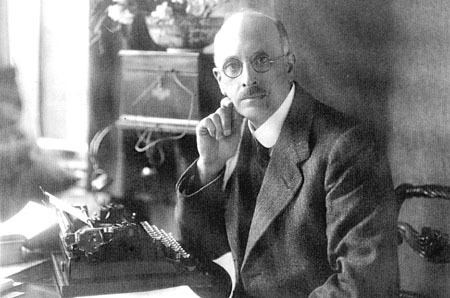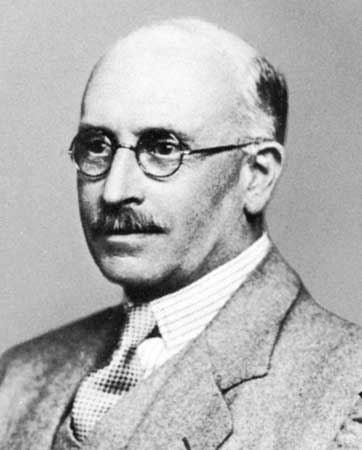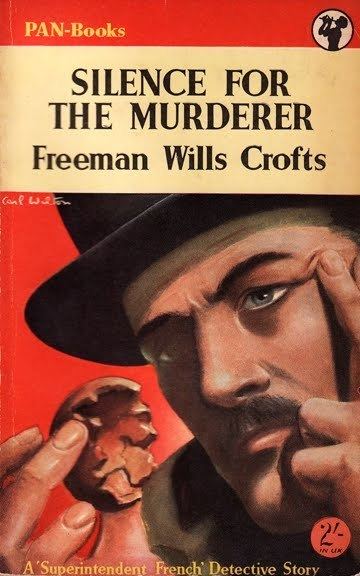Name Freeman Crofts | Role Author | |
Born 1 June 1879Dublin, Ireland ( 1879-06-01 ) Occupation Civil Engineer, Novelist Literary movement Golden Age of Detective Fiction Books Inspector French and the Starv, The cask, Inspector French's Greatest, The Hog's Back Mystery, Antidote to venom Similar People Anthony Berkeley Cox, Dorothy L Sayers, Edmund Clerihew Bentley, Ronald Knox, Sir Henry Aubrey‑Fletcher - 6th Baronet | ||
Dolores Gordon Smith - Tracking Down The Murderer
Freeman Wills Crofts FRSA (1 June 1879 – 11 April 1957) was an Anglo-Irish mystery author during the golden age of detective fiction.
Contents
- Dolores Gordon Smith Tracking Down The Murderer
- Pit Prop Syndicate Freeman Wills Crofts Crime Mystery Fiction Published 1900 onward 15
- Birth and education
- Engineering career
- Writing career
- Marriage affiliations and other interests
- Reputation
- Novels
- Short story collections
- Uncollected short stories
- Stage plays
- Radio plays
- Non fiction
- Anthologies containing stories by Freeman Wills Crofts
- Lost short stories
- References

Pit Prop Syndicate | Freeman Wills Crofts | Crime & Mystery Fiction, Published 1900 onward | 1/5
Birth and education

Crofts was born at 26 Waterloo Road, Dublin, Ireland. His father, also named Freeman Wills Crofts, was a surgeon-lieutenant in the Army Medical Service, but he died of fever in Honduras before the young Freeman Wills Crofts was born. His mother, née Celia Frances Wise, remarried the Venerable Jonathan Harding, Vicar of Gilford, County Down, and Archdeacon of Dromore, and Crofts was brought up in the Gilford vicarage. He attended Methodist College and Campbell College in Belfast. In 1912 he married Mary Bellas Canning, daughter of the manager of a local bank in Coleraine.
Engineering career

In 1896, at the age of seventeen, Crofts was apprenticed to his maternal uncle, Berkeley Deane Wise, who was chief engineer of the Belfast and Northern Counties Railway. In 1899 Crofts was appointed Junior Assistant on the construction of the Londonderry and Strabane Extension of the Donegal Railway. In 1900 he became District Engineer at Coleraine for the L.M.S. Northern Counties Committee at a salary of £100pa, living at 11 Lodge Road in the town. In 1922 Crofts was promoted to Chief Assistant Engineer of the railway, based in Belfast. He lived at 'Grianon' in Jordanstown, a quiet village some six miles north of Belfast, where it was convenient for Crofts to travel by train each day to the railway's offices at York Road. One of the projects he worked on was the design of the 'Bleach Green Viaduct' in Whiteabbey, close to his Jordanstown home. This was a significant 10 arch reinforced concrete viaduct approved in 1927 and completed in 1934. It carried a new loop line which eliminated the need for trains between Belfast and the north west to reverse at Greenisland. Croft continued his engineering career until 1929. In his last task as an engineer, he was commissioned by the Government of Northern Ireland to chair an inquiry into the Bann and Lough Neagh Drainage Scheme.
Writing career
In 1919, during an absence from work due to a long illness, Crofts wrote his first novel, The Cask (1920), which established him as a new master of detective fiction. Crofts continued to write steadily, producing a book almost every year for thirty years, in addition to a number of short stories and plays.
He is best remembered for his favourite detective, Inspector Joseph French, who was introduced in his fifth book, Inspector French's Greatest Case (1924). Inspector French always set about unravelling each of the mysteries presented him in a workmanlike, exacting manner – this approach set him apart from most other fictional sleuths.
In 1929, he abandoned his railway engineering career and became a full-time writer. He settled in the village of Blackheath, near Guildford, in Surrey, and a number of his books are set in the Guildford area, including The Hog's Back Mystery (1933) and Crime at Guildford (1935). Many of his stories have a railway theme, and his particular interest in the apparently unbreakable alibi often focused on the intricacies of railway timetables. At the end of his life, he and his wife moved to Worthing, Sussex in 1953, where they lived until his death in 1957, the year in which his last book was published.
Crofts also wrote one religious book, The Four Gospels in One Story, several short stories, and short plays for the BBC.
Marriage, affiliations and other interests
In 1912 he wed Mary Bellas Canning, the daughter of John J. C. Canning of Coleraine, Ireland, bank manager. They had no children.
He was a member, with Dorothy L. Sayers and Agatha Christie, of the Detection Club which met in Gerrard Street.
In 1939 he was elected a fellow of the Royal Society of Arts.
Crofts was not only a railway engineer and writer, but also an accomplished musician. He was organist and choirmaster in Killowen Parish Church, Coleraine, St Patrick's Church, Jordanstown and the parish church of St Martin's in Blackheath.
Reputation
Crofts was esteemed, not only by his regular readers, but also by his fellow writers of the so-called Golden Age of Detective Fiction. Agatha Christie included parodies of Inspector French alongside Sherlock Holmes and her own Hercule Poirot in Partners in Crime (1929).
Raymond Chandler described him as "the soundest builder of them all when he doesn’t get too fancy" (in The Simple Art of Murder). His attention to detail and his concentration on the mechanics of detection makes him the forerunner of the "police procedural" school of crime fiction.
However, it has also given rise to a suggestion of a certain lack of flair – Julian Symons describing him as of "the humdrum school". This may explain why his name has not remained as familiar as other more colourful and imaginative Golden Age writers, although he had 15 books included in the Penguin Books "green" series of the best detective novels and 36 of his books were in print in paperback in 2000.
Novels
Short story collections
Uncollected short stories
Stage plays
Radio plays
Non-fiction
Anthologies containing stories by Freeman Wills Crofts
Lost short stories
These stories are known to have been published but no copies of the publications concerned are believed to exist today
